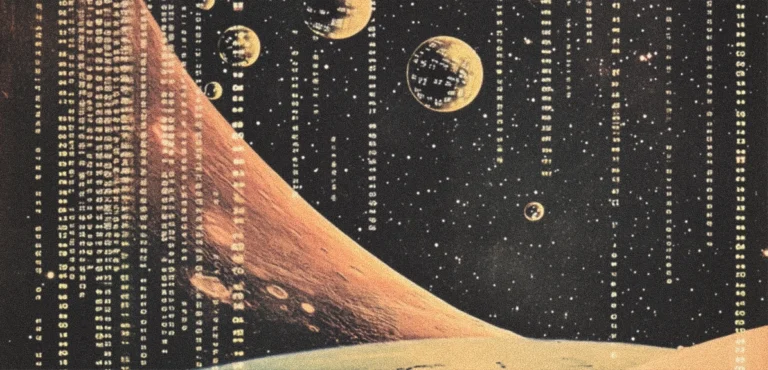
TED TALK: The Last 6 Decades of Artificial Intelligence Trends — and What Comes Next
Our world will look and operate drastically differently over the next few decades. Powered by exponential AI technology, the transformation will be unlike anything humankind has experienced before. One person who holds the key to where we are headed is Ray Kurzweil, an American computer scientist and futurist.
In a compelling TED presentation titled “The Last 6 Decades of AI—and What Comes Next”, Kurzweil offers a fascinating glimpse into the past, present, and future of AI.
The start of artificial intelligence discourse
Ray Kurzweil explains that he has been working in the field of artificial intelligence for 61 years – when he started, no one had heard of AI. According to Kurzweil the term ‘Artificial Intelligence’ was coined at the Dartmouth Conference in 1956. In those early days, AI was largely unknown to the public; hence, most people were still quite skeptical. They thought the AI revolution would never happen, and even if they did consider it, it was centuries away.
Some of them, including Marvin Minsky (Kurzweil’s mentor for 50 years), thought it would take one semester to reach the level of intelligence that humans had—a prediction that sparked Kurzweil’s first disagreement with Minsky regarding AI. However, the people that were present at that Dartmouth conference were quite optimistic about AI revolution, and closely followed AI trends for decades to come.
The extravagant growth of computing power
Kurzweil mentioned that he’s been monitoring the growth of computation for nearly 45 years. In his explanation, he highlighted the first programmable computer, the Zuse 1, in 1941, which performed .00007 calculations per second per dollar. However, over the decades, computing has completely changed the human environment through its groundbreaking advances – from business to finance, social relations, government, and society, to name a few. This growth pattern has led to unprecedented developments. His explanation makes you appreciate the pace at which technology is evolving.
Forecasting the future of Artificial General Intelligence (AGI)
In 1999, Kurzweil predicted that AGI (a type of artificial intelligence that matches or surpasses human capabilities across a wide range of cognitive tasks) would be achieved in 2029. Most people considered that to be a crazy prediction then, but not now. Today, after the release of the new generative AI models, many think that AGI will be attained before 2029. Kurzweil admits his 2029 prediction now seems pessimistic, but many conservative scientists still claim AGI will never happen. However, Kurzweil predicts that time will make it happen, and most of Kurzweil’s followers will live to see if he is right.
The singularity is nearer, where the line between humans and machines blurs
Looking further ahead, Kurzweil envisions a future called ‘Singularity’, where humans will merge with AI. This paradigm shift is poised to be a transformative moment in human history, fundamentally altering our world in ways we can hardly imagine. Ray Kurzweil predicts AI will reach human-level intelligence by 2029, and the Singularity will occur by 2045. He believes AI will dramatically improve the quality of life – a point at which human intelligence is enhanced a million-fold.
Kurzweil highlights humanity’s unique ability to create tools that enhance our intelligence. He stresses that while other species, like elephants and whales, have comparable or larger brains, humans stand apart due to their opposable thumbs. This functional feature allows humans to create and use sophisticated tools—a capability that Kurzweil sees as the essence of AI development.
Longevity escape velocity
According to Kurzweil, as we enter the 2030s, we will achieve a new milestone – it’s called the ‘Longevity Escape Velocity’. For those who aren’t aware, longevity escape velocity is when life expectancy increases by more than a year per year.
He predicts that progress in technology will extend human life expectancy by more than a year for each year that passes. This could potentially lead to a situation where aging is effectively outpaced by medical advancements.
The future of resources and energy
He believes that AI will help solve resource scarcity issues. He predicts that advancements in nanotechnology and material science will lead to the widespread adoption of renewable energy sources (sun and wind). Solar power will become more efficient and cost-effective, significantly reducing the reliance on fossil fuels, which will further help mitigate the impacts of climate change.
The talk concludes with a vision of an AI-enhanced future where humans will become more smarter, more creative, and free from many biological limitations. In his vision of the future, humans will have the ability to expand their consciousness in ways we can barely imagine today.
Kurzweil has been talking about artificial intelligence long before most people even knew what the term meant. Hence, he has a unique perspective on how much technology has evolved over the years. Through this session, he has shared his vision of how AI will take us over the next few years.
His influential books, such as “The Singularity is Near” and “How to Create a Mind,” further establish his authority on the future of technology, making his perspectives highly valuable for CTOs and other business leaders. Bill Gates has called Kurzweil “the best person I know at predicting the future of artificial intelligence.”
In brief
Kurzweil’s expertise and optimistic outlook offer a thought-provoking, long-term, big-picture view of the future of AI for new-gen leaders.